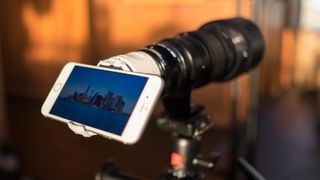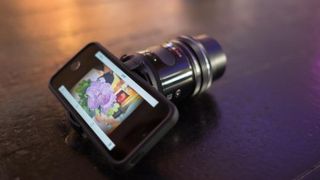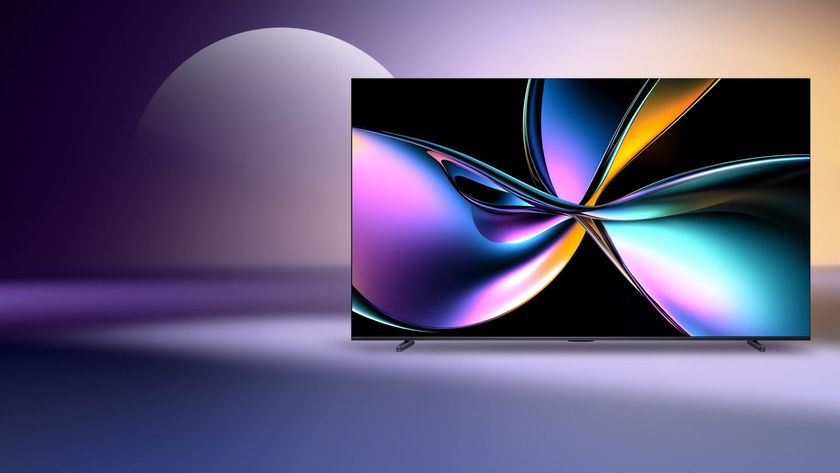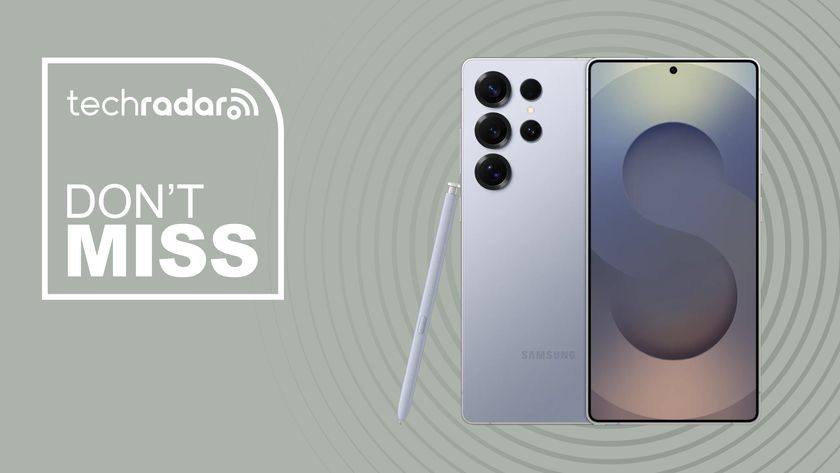Why you can trust TechRadar
The Olympus Air A01 comes sporting the same 16MP, MFT image sensor as the first generation OMD E-M10. The Air also inherits the E-M10's 81 contrast autofocus points – the sensor detects different colors and levels of brightness automatically – and its TruePic VII processing engine.
While this means you'll easily get sharp and colorful images, it also means pushing the ISO sensitivity above and beyond the 1,600 mark is just asking for trouble. Unlike the OMD E-M5 II and OMD E-M10 II, the Air does not suppress noise as well. Expect to run into other color issues when trying to take photos in dimly lit environments.
What's more, the Air A01 isn't equipped with any of Olympus's sensor-based image stabilization technology. That makes it that much harder to shoot a steady image in the dark without the aid of a tripod or monopod. Olympus says its lens camera will digitally suppress camera shake, but it's a poor substitute for optical image stabilization, or OIS.

Given the small stature of the Olympus Air, battery life isn't great either. Olympus claims you should expect to get about 320 photos out of a full charge. With real world usage, the Air allows me to shoot for several hours, but it almost always flops over after about half a day. However, with USB charging, at least the thing can be charged on the go – if you have a portable USB battery.
Shortcomings aside, I am thoroughly impressed with the quality of images I can take with this pocket camera. They are just as sharp as the photos I produce with my Olympus OMD E-M5 Mark II and doing everything from a smartphone makes it that much faster to go from taking a shot to editing and posting it online.

Breaking line of sight
I've fallen in love with the sheer flexibility the Olympus Air A01. Because I don't need to look at a screen attached to the camera, I point the device at all odd angles to capture new perspectives. It's liberating not to have to be chained to an electronic or optical viewfinder. While articulating LCDs offer some amount of freedom when composing a shot, you can be that much more creative when you're holding the camera in one hand and the screen in the other.
I find it invaluable for public street shooting, which can be an intrusive form of photography for your unwitting subjects. The only ways to get around the problem is either by just being quicker on the draw or just shooting intuitively with zone-focusing.
With the Air in hand, however, I was able to casually stand right next to a person (in a public space, of course) and take their photo while pretending to look at my smartphone. It's a bit craftier than pointing a camera directly at someone's face, but having a smaller camera makes street photography less threatening. For this reason the Air is one of the least intrusive cameras you can tote around.

Connection issues
Unfortunately, the most annoying thing about the Air is how often it drops connection with your smartphone. Whenever this happens, the camera app's live view stops on a freeze frame, preventing me from seeing what I am shooting. Worse yet, I can't access any of the controls, including triggering the shutter. Thankfully, this issue doesn't lock up the camera, so I can still blindly fire off the shutter and hopefully catch the shot.
It's a pervasive problem that almost always happens at the most inopportune times while I'm out street shooting. As far as I can tell, it's an issue that crops up no matter whether I'm outside on the street, in a park or in an office building congested with wireless signals. Worse yet, I simply could not get the app and camera to connect while using the Olympus Air A01 with a Motorola Moto X (2014).
The coolest bit about the Air is its ability to beam what it sees to your smartphone. When that feature frequently fails, it frankly renders the entire point of the device moot.
In the future, I hope Olympus will be able to improve the reliability of its lens camera's Wi-Fi and Bluetooth connection. In the meantime, it's simply too unreliable, so prepare to fire off the camera blindly at times.
Kevin Lee was a former computing reporter at TechRadar. Kevin is now the SEO Updates Editor at IGN based in New York. He handles all of the best of tech buying guides while also dipping his hand in the entertainment and games evergreen content. Kevin has over eight years of experience in the tech and games publications with previous bylines at Polygon, PC World, and more. Outside of work, Kevin is major movie buff of cult and bad films. He also regularly plays flight & space sim and racing games. IRL he's a fan of archery, axe throwing, and board games.














